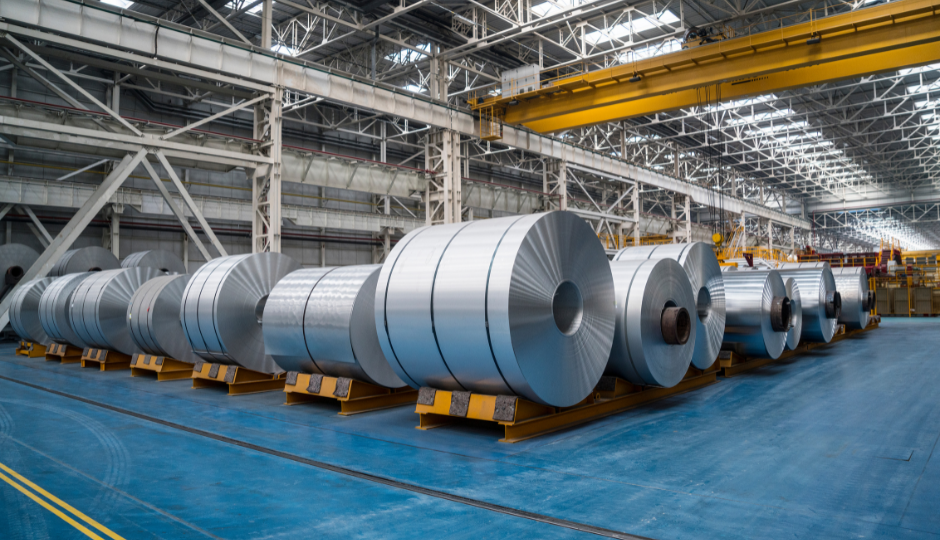Metal spinning is a common metallurgy process that turns a blank workpiece into an axially...
Kryton Metals Blog
Metal Spinning VS Metal Rolling: The Ultimate Comparison

Metal rolling and metal spinning are two distinct fabrication techniques, each using a rotational process to alter the shape and dimensions of a workpiece. However, their outcomes, timelines, and requirements are unique.
This blog will discuss the nuances of metal rolling and spinning. We will begin by exploring the definition of both processes, followed by an in-depth explanation of their pros and cons. Then we will compare project size, quality, materials, and use cases to help you make an informed decision. Let’s get started.
What Is Metal Spinning
Spin forming or metal spinning, is a metal fabrication technique involving multiple steps. Operators place workpieces on rotating lathes to shape metal discs or tubes into the desired form. They use specific metal spinning tools to apply pressure, causing the materials to take the shape of the mandrel. This rapid metalworking method eliminates the need for high heat, lasers, or chemical processing.
Process Characteristics
The primary properties and applications of metal spinning are distinct but flexible. This metal fabrication process renders cylindrical parts, hemispheres, cones, and domes. It is best for creating automotive parts, aerospace components, agricultural equipment, and decorative pieces.
Metal Spinning Pros and Cons
Metal forming with spinning lathes means faster production speeds and better repeatability. However, engineers must weigh the pros and cons to avoid errors or costly mistakes.
Pros
- High versatility
- Cost-effectiveness
- Quick turnarounds
- Seamless surfaces
- Geometrical consistency
- Excellent surface finish
Cons
- Size constraints
- Limited automation
- Shape complexity restrictions
What Is Metal Rolling?
Metal rolling is a metal fabrication technique involving a series of heavy rollers. Operators send sheet metal or metal strips through the machine to create shapes based on a specific cross-sectional profile. The machine’s rollers press and bend the material into rolls with various specialized processes. These specialty rolled metals include carbon steel, stainless steel, aluminum, copper, brass, nickel, and titanium. Roll forming of these materials is a more complex process of metal rolling.
Process Characteristics
The primary properties and applications of metal roll forming are diverse and innovative. This process fabricates tubes, bars, plates, and custom profile rolls with complex cross-sections. It is best suited for manufacturing, construction, and infrastructure projects.
Metal Rolling Pros and Cons
Metal rolling has multiple benefits but also a few drawbacks. Let’s explore those next:
Pros
- High production speeds
- Surface finish control
- Cost-effectiveness
- Customizable designs
- Excellent material utilization
- Improved material integrity
Cons
- Initial investment costs
- High energy consumption
- Limited material diversity
Quick Comparisons
This section will provide a brief side-by-side of both fabrication processes – metal spinning and metal rolling.
Use Cases
- Metal spinning makes deep, hollow objects from sheet metal. Examples include bowls, lighting fixtures, nose cones, and missile casings.
- Metal rolling makes rolls of metal from sheets or strips. Examples include metal sheets, strips, bars, and
Accuracy
- Spun metals are precise despite symmetry or required tolerances.
- Rolled metals offer excellent dimensional precision for standardized designs.
Materials
- Available materials for metal spinning include brass, bronze, silver, stainless steel, and other non-ferrous Certain high-strength, low-alloy steels and other very hard metals might be more suitable for rolling rather than spinning, particularly if the end product requires large flat sheets or very thick components.
- Available materials for metal rolling include ferrous, non-ferrous, and many non-metallic textiles. Conversely, softer, and more ductile metals such as pure aluminum, softer brasses, and some grades of stainless steel might be more easily spun than rolled, especially when it comes to creating complex or intricate shapes or hollow forms.
Can Metal Spinning and Metal Rolling Be Used Interchangeably?
Metal spinning and rolling are categorically different. Each has unique principles, applications, capabilities, and outcomes. While some of the required metal fabrication processes may overlap, engineers cannot interchangeably use spin forming and metal rolling.
Both techniques offer distinct pros and cons. Use metal spinning for small-batch, axisymmetric designs requiring precision and customization. Choose metal rolling for large-scale production of standardized shapes.
Is One Process More Efficient Than the Other?
Metal fabrication efficiency depends on multiple factors, such as:
- Design complexity
- Material properties
- Surface finish
- Lead times
- Environmental impact
- Skilled labor
- Facility location
- ISO requirements
Speak to a metal spinning and forming team to determine the best route and develop a plan. Discuss the pros, cons, and applications. Then compare the outcomes and size constraints to decide.
Conclusion
Metal spinning and metal rolling are two different fabrication approaches. Both provide design flexibility and cost-effectiveness, but one is more suitable for small projects, while the other is best for large orders. Learn the other benefits and limitations, such as surface finish quality, processing time, and material restrictions.
Reach out to Kryton Engineered Metals for a service quote and expert advice.



